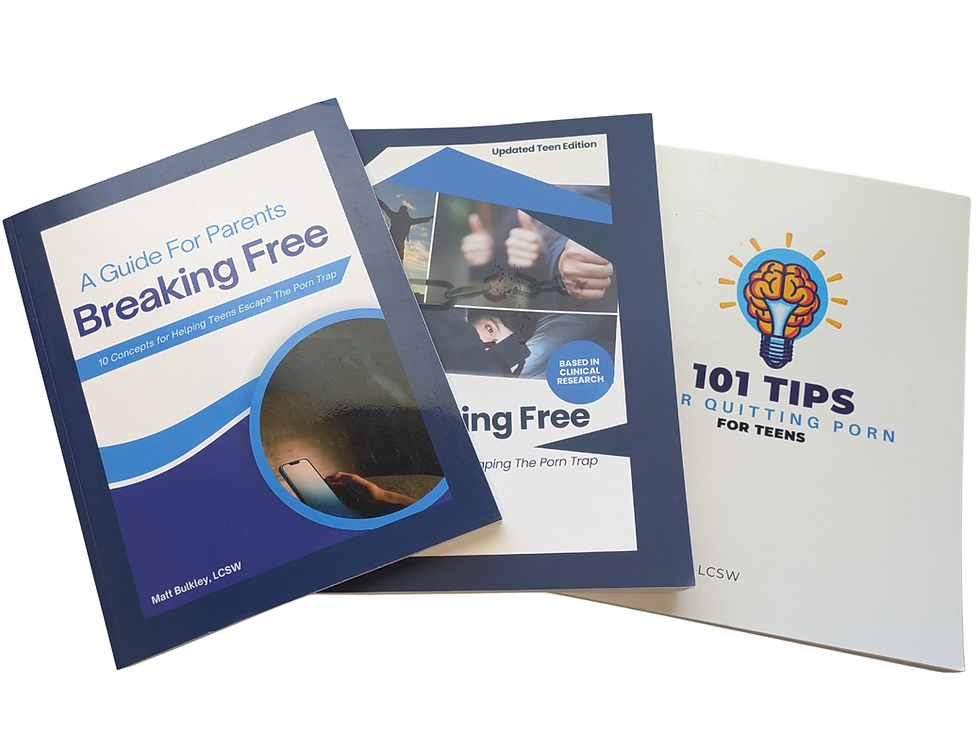How Art Can Help Your Teen Heal from Pornography Addiction: A Creative and Therapeutic Approach
- Matt Bulkley

- Jun 28
- 3 min read
If your teen is struggling with pornography addiction, you may be searching for healthy, supportive ways to help them cope with stress, emotions, and the temptation to relapse—especially during unstructured time. One powerful, research-backed tool that might not be on your radar is art.
Whether it’s painting, drawing, sculpting, or any form of creative expression, engaging in art offers far more than just a fun distraction. It can be a transformative part of your teen’s healing journey. Here’s how—and why—this works.
1. Art Helps Process Emotions in a Safe and Healthy Way
Pornography addiction is rarely just about the content. Often, it’s a coping mechanism for dealing with stress, anxiety, loneliness, or emotional overwhelm. Teens, especially, may not yet have the tools to express or process what they’re feeling in healthy ways.
That’s where art steps in.
Research published in the American Journal of Art Therapy shows that creative expression lowers stress hormones like cortisol, and increases feel-good brain chemicals like dopamine. In other words, making art helps the brain relax and release emotional tension—without turning to harmful behaviors.
Instead of bottling things up or zoning out on a screen, your teen can pick up a paintbrush or piece of clay and let their emotions out in a nonverbal, healing way.
2. Art Therapy Is a Proven Tool in Addiction Recovery
Clinicians and counselors regularly use art therapy in their work with teens and adults recovering from addiction. It’s not about being a “good artist”—it’s about giving the brain and heart a different language to express difficult thoughts and feelings.
A study in the Journal of Addiction Nursing found that individuals who incorporated creative expression into their recovery routines were significantly less likely to relapse. Why? Because they had a reliable outlet—something they could turn to instead of falling back into old patterns.
Art gives teens a way to process trauma, explore identity, and build emotional resilience—without needing to talk through everything out loud (which many teens find intimidating).
3. Art Creates a “Flow State” That Replaces Unhealthy Habits
Ever watched someone completely immersed in a painting or project and totally lose track of time? That’s called “flow”—a focused mental state where your brain is fully engaged and present. Psychologist Mihaly Csikszentmihalyi (a leading researcher on flow) found that it creates a natural high and helps reduce compulsive behaviors.
When your teen is engaged in an art project, their brain is busy in the best way. Studies from the Journal of Adolescent Health confirm that creative expression improves confidence, self-awareness, and reduces the likelihood of falling back into unhealthy coping mechanisms like pornography.
4. Art Builds Identity, Confidence, and Self-Control
Teens recovering from pornography addiction often struggle with low self-esteem, guilt, and shame. Creating art offers a tangible sense of progress and accomplishment. Whether it’s a finished painting, a sculpture, or even a journal full of sketches, these visible outcomes reinforce a sense of personal growth and worth.
When a teen looks at something they created and thinks, “I made that,” it reinforces a powerful truth: They are capable of more than they think. This self-confidence can be a game-changer in the recovery process.
How You Can Support Your Teen’s Artistic Exploration
You don’t need to be an artist yourself to encourage this practice. Here are some simple ways to get your teen started:
Provide supplies: Sketchbooks, paints, clay, or digital tools can spark curiosity.
Create space: Set up a quiet, inviting area in the home for creativity.
Celebrate the process: Focus on their effort and expression—not on the end result.
Allow freedom: Let them explore different mediums or styles without pressure.
Most importantly, normalize art as a healthy outlet—not just a hobby, but a tool for emotional strength and recovery.
Final Thoughts: From Craving to Creating
When your teen picks up a paintbrush instead of a phone, they’re doing more than staying busy—they’re rewiring their brain, expressing their emotions, and building strength from the inside out.
Art gives your teen a way to heal, grow, and explore who they are without shame. And the best part? It’s something they can own completely—creative, personal, and powerful.
Want more research-based tools for supporting your teen’s healing? Visit our website filled with practical tips, emotional support strategies, and inspiration for families navigating recovery with hope and confidence.










Comments